What might a third term for the capital’s most powerful politician look like? Daniel Gayne considers the mayor’s record so far
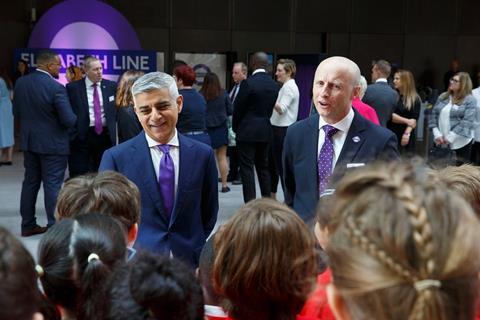
In the weeks since Sadiq Khan launched his re-election campaign, the mayor of London’s team have been briefing the national press about their fears for the upcoming vote. The two-times mayor is reportedly worried that, when Londoners go to the polls on 2 May, the outcome will be closer than widely predicted because of the new first-past-the-post voting system.
More likely the mayor is simply engaging in a bit of get-out-the-vote reverse psychology. After all, the pollsters have him 25 points ahead of his nearest rival and he is the runaway favourite with the bookmakers.
If he does win the election for an unprecedented third term, Khan will once again be put in a position to make some big decisions affecting the built environment. So, what does his record over his first two terms tell us about how he might govern in a third?
Ambitious plan for infrastructure
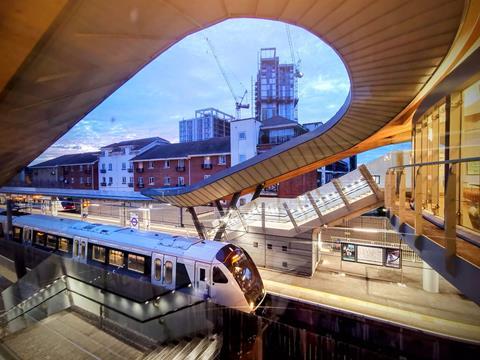
In 2016, the then would-be mayor Khan had big plans for infrastructure. In his manifesto, he promised to “plan for the long term, securing Crossrail 2, Bakerloo line and London Overground extensions, as well as new river crossings, and move on to discussions about Crossrail 3 and new orbital links”. He also pledged to seek additional fundraising powers from the government for major projects.
While the mayor quickly made good on a promise to plan for the long term – establishing in 2017 a London infrastructure group, which convenes 25 industry leaders twice a year to develop a common vision for the city’s infrastructure – he has found it more difficult to make these plans a reality.
The slightly dampened tone he struck in his 2021 manifesto spoke a lot to the difficulties that he faced. “Nobody has been more frustrated than me about the delays to the opening of the Elizabeth line,” he said, addressing the only one of the previously mentioned projects to have spades in the ground during his term.
The Crossrail job was inherited from his predecessor Boris Johnson and experienced severe delays and cost overruns, with Transport for London ultimately taking full control of the project under the mayor’s oversight. The line was eventually opened to much fanfare in May 2022.
The other candidates

Susan Hall, Conservative
Khan’s Tory rival has repeated her national party’s attack lines about the mayor failing to build enough housing. She says the London Plan needs to be changed ”to make it easier to build the family homes that Londoners want”.
Unblocking development on brownfield, she says, will enable families to stay in London without developing on the green belt. “My plan will focus on beautiful, green, community-oriented places that are high density but not high rise, inspired by the Create Streets model,” she says. She has also promised to relaunch the London Land Commission to identify brownfield sites where homes could be built.
Zoë Garbett, Green Party
The only party to release a full manifesto so far, the Greens have a number of ideas which would affect the built environment. Garbett wants to expand programmes to purchase existing family-sized homes from the market for use as council housing and has demanded rent control powers for the city.
She also wants to set up a cold homes strategy, with an insulation and ventilation taskforce and has promised to create at least 10 new major parks within the city.
Rob Blackie, Liberal Democrat
The self-described “bionic man”, after a violent mugging which left him with a new titanium neck, has made violent crime the centrepiece of his campaign, but has also promised to be a “Yimby champion”. He says he will ”back new housing of all types and monitor private as well as social builds”, to work with councils to deliver more homes, and focus on improving public transport in outer London.
Blackie also wants to create a post-Brexit “London passport”, that would confirm the rights of EU citizens living in London.
Howard Cox, Reform UK
Reform’s candidate is running a campaign focused on increasing policing levels and getting rid of LTNs, ULEZ and other road restrictions. His campaign website also includes a pledge to “triple affordable housing builds, particularly on GLA and TFL-owned land”.
Femy Amin Animal Welfare Party
Count Binface Count Binface for Mayor of London
Natalie Campbell Independent
Amy Gallagher Social Democratic Party
Tarun Ghulati Independent
Andreas Michli Independent
Brian Rose London Real Party
Nick Scanlon Britain First
However, Khan’s second term also saw TfL make slow progress towards realising some of its other projects. His 2021 manifesto included a promise to lobby for a “fair share” of government transport investment, “prioritising the DLR extension to Thamesmead and, when the time is right again, the Bakerloo line extension and Crossrail 2”. Some of this work is nearing fruition, while other elements have been frustrated.
In February this year, TfL’s programmes and investment committee approved £2.5m to develop an outline business case for the DLR to Thamesmead project and began public consultation on the scheme. Meanwhile, the Bakerloo line extension has been ready to go for years now.
TfL oversaw a detailed consultation on a finalised proposal at the end of 2019. The Department for Transport safeguarded the land necessary to build the scheme and TfL was reportedly considering using a land value capture tax to pay for it. However it was put on hold, along with Crossrail 2, due to the financial situation created by the pandemic.
Passenger numbers fell to a trickle as a result of covid-19 lockdowns, forcing TfL – which makes most of its revenue from fares – to rely on emergency funding from central government to keep operating. This situation has continued, with hard negotiations between the transport body and the DfT leaving the former without long-term clarity over its finances.
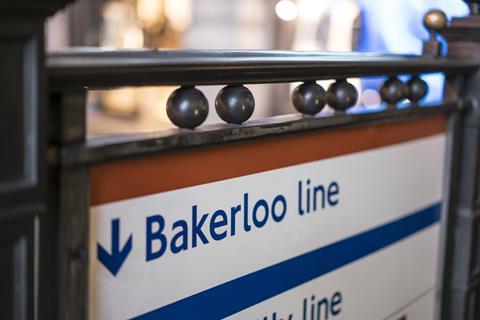
It is safe to say that Crossrail 2 remains on the shelf for now. Giving evidence to the London Assembly budget and performance committee last June, TfL’s finance chiefs explained that the lack of a long-term funding settlement means that projects such as Crossrail 2 had been “moved from being a current priority to a future one”. In its latest update on the project, which could cost up to £40bn, TfL said only that it was working to “refresh” safeguarding on the scheme.
By contrast, TfL says the £8bn Bakerloo line extension could feasibly begin construction from 2030, subject to funding. Whether such funding materialises may depend on how friendly the next Westminster government is. A one-year funding deal struck with the government at the end of last year was, at £250m, less than half what the transport authority asked for and has forced it to focus on the bare essentials.
There is no question that, on infrastructure, Khan overpromised in 2016. The answer to the question of whether he underdelivered depends on the extent to which one blames the circumstances over which he has presided.
The mayor inherited a dysfunctional Crossrail project and saw his attempts to push for further investment dashed by an increasingly hostile national government, a crash in passenger numbers due to the pandemic and a subsequent wave of building cost inflation. His critics would say that he has been lax with TfL’s finances, citing the expense of fare freezes – which he has committed to again this year using £123m of GLA funding – and the £30m given to Underground drivers to avert a new year Tube strike.
Ramp up affordable housing
Housebuilding has been a central plank of Khan’s offer since before he was first elected as mayor. In 2016, he committed to “break the homebuilding logjam” by creating a new team
called Homes for Londoners, which he said would bring together all the mayor’s housing, planning, funding and land powers alongside new experts to raise investment, assemble land and commission and construct new homes. He quickly made good on his promise to establish such a body, alongside an online portal advertising shared ownership and help-to-buy homes funded through City Hall’s affordable housing programmes.
In 2021, he put forward a more ambitious set of proposals for housing, promising to deliver 10,000 new homes in the capital, creating a fund to re-purchase housing stock sold under Right to Buy, and pilot a new City Hall developer to directly build low-cost homes in the capital. Shortly after his re-election, Khan launched his Right to Buy Back programme, with more than 1,200 homes subsequently brought into council ownership.
Sadiq has got London building again. More council homes are now being built than at any time since the 1970s – a tenfold increase since Labour took back City Hall. Overall housebuilding in London has reached levels not seen since the 1930s
Sadiq Khan’s re-election website
Later in his term, in November 2023, he created another similar programme – the Council Homes Acquisition Programme – which gave councils cash to buy homes from other homeowners and private landlords looking to sell. Khan has said he wants the fund to enable the purchase of 10,000 homes over a decade.
The mayor has also made steps towards creating his own developer. He commissioned Lord Kerslake to conduct an independent review, which was published in March 2022 and recommended a two-stage approach. Khan has carried out the first stage suggested by Kerslake, which has involved bolstering the in-house development team, whose activities include land acquisition and partnering with the existing affordable housing sector.
Khan has committed to carrying out the second phase, which would involve direct delivery of housing, if he is re-elected. In May 2023, he explained that such a developer would focus on challenging sites that housing associations cannot bring forward by themselves.

Khan’s relentless focus on housing affordability has on occasions set him at odds with developers. While his initial 2016 manifesto target for 50% of all new homes in London to be “genuinely affordable” was ultimately watered down to a 35% requirement after talks with developers, he has stuck fast to this level since then.
A number of his manifesto commitments were implemented in his London Plan, published in February 2021, including a reiteration of his 50% ambition as a “strategic target” – though no formal timetable was set for this to be achieved – and updated space and quality standards for new-build homes. His London Plan also dodged calls by planning inspectors for a review of London’s green belt, which upset many in the development industry.
His focus on the issue has yielded some results. In May 2023, Khan announced that work had started on 116,000 “genuinely affordable” homes since his election in 2016 and his camp claims that more council homes are being built under him than at any time since the 1970s. However, recent years have seen overall housebuilding slow dramatically because of a range of factors including high interest rates and build cost inflation and uncertainty around building safety regulations.
The number of net additional dwellings in London peaked at 45,676 in 2019 and has fallen back every year since then. Critics, including the housing secretary and some developers, have suggested that the mayor’s commitment to affordability has made schemes unviable.
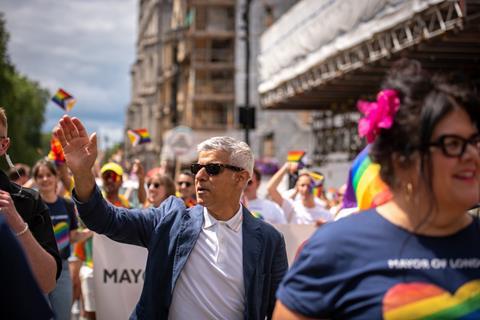
The mayor also had one element of his affordability drive undone by litigious housing developers. His affordable housing and viability supplementary planning guidance (SPG), adopted in August 2017, had introduced a “fast-track” process for all residential schemes built without public subsidy, including specialised retirement housing developments, that offer at least 35 per cent on-site affordable housing.
Under the guidance, developers offering less than this level would have been required to submit a viability assessment to the Greater London Authority, whereas those providing a higher amount did not. After a legal challenge by a group of retirement housing developers, the High Court found the requirement to be unlawful in May 2018.
The mayor has used his planning decision-making powers to intervene over a number of controversial leisure and tourist developments, most notably the Popular-designed MSG Sphere in Stratford and Foster + Partners’ controversial Tulip tourist tower in the City of London. However, he has also used his position to negotiate increased levels of affordable housing or improved Section 106 agreements on residential schemes, including a 441-home development in Brentford and the Bishopsgate Goodsyard development.
Unchanged but emboldened
If Khan does win a third term, there are no signs that he will change tack substantially. On transport, he appears committed to keeping fares down while pushing along major infrastructure projects at whatever pace central government funding allows him to. Similarly, on housing, affordability is his watchword, even when it puts a dampener on wider development.
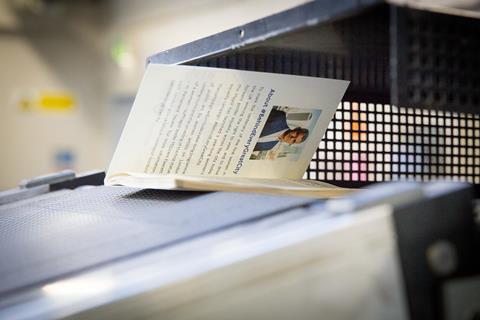
His boldness in sticking to his guns has put the fate of both infrastructure and housing in Khan’s London in central government’s hands. The mayoral election will be followed, at some point this year, by a general election – and it seems the outcome could be the dominant factor in how successful Khan’s built environment policies are.
A friendly Labour government, accompanied by the ongoing pick-up in passenger numbers, could ease TfL’s long-term funding worries, while on housing, the mayor will be hoping for greater support from his party leadership, who have spent the past year cosying up with big developers and promising to back “the builders not the blockers”.
A Labour government could be a mixed blessing for developers, however. While Sir Keir Starmer has scrapped Labour’s wider rent controls pledge, he will no doubt be a more sympathetic ear to the London mayor – who has long asked for the power in the capital – than the current government. What is more, shadow chancellor Rachel Reeves’ emphasis on fiscal rectitude means a big increase in state investment for the built environment is by no means a certainty.
Khan goes into this election as an unchanged man – but he will come out the other side into a rapidly changing world.
>> Also read: Khan commits to ending rough sleeping in London by 2030 if re-elected




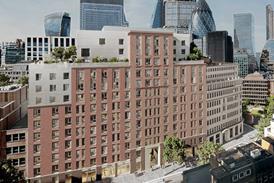
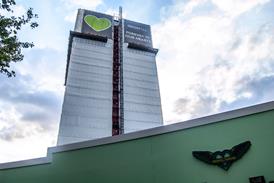










1 Readers' comment